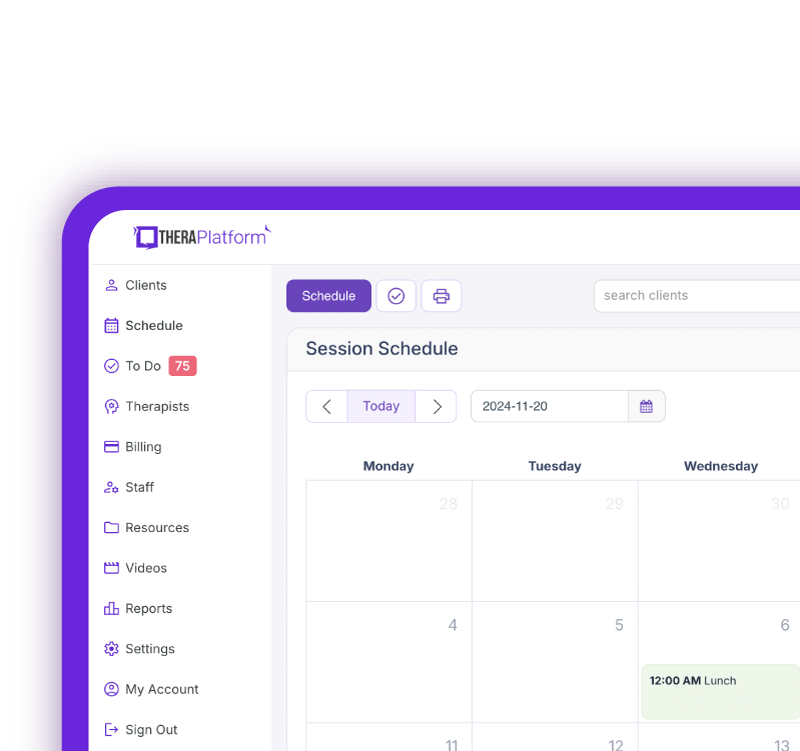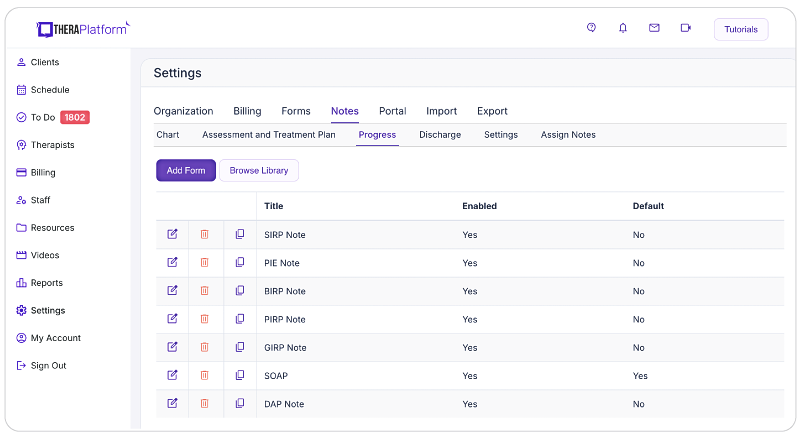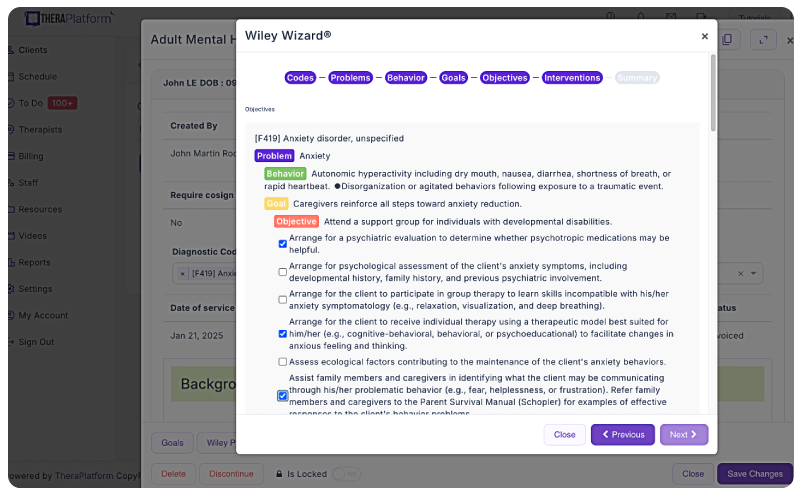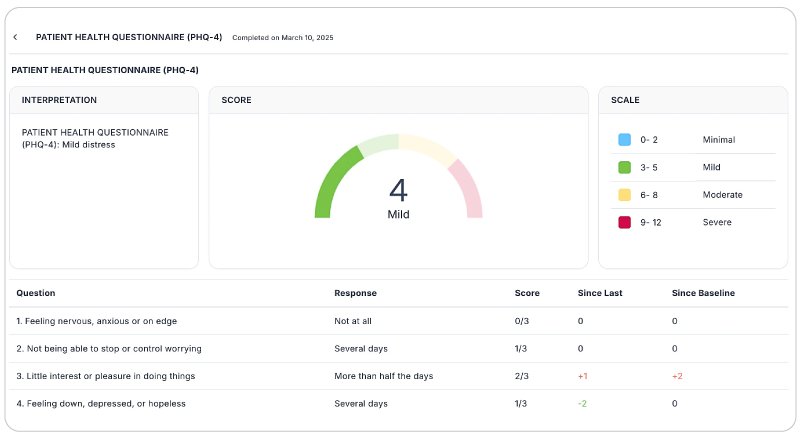RAADS-R

RAADS-R test or Ritvo Autism Asperger Diagnostic Scale–Revised is among many tools that provide insight, guiding us through the complexities of autism spectrum disorders. In a world that thrives on diversity and inclusivity, the accurate assessment and understanding of neurodiverse conditions, especially within the autism spectrum, have never been more critical. Autism spectrum disorders encompass a wide range of traits, making it essential for clinicians, educators, and individuals themselves to have access to effective diagnostic tools.
Summary
- RAADS-R is a validated self-report tool designed to identify autism traits in adults, focusing on domains like social interaction, communication, sensory responses, and repetitive behaviors.
- It supports personalized treatment planning by helping clinicians recognize patterns, domain-specific challenges, and individual strengths—without providing a definitive diagnosis.
- A client-centered, empathetic approach is essential when administering and interpreting RAADS-R results. Emotional support and psychoeducation help clients process their outcomes constructively. Download emotional literacy worksheets.
- Test scores can inform collaborative goal-setting and ongoing care, especially when integrated with therapeutic strategies tailored to autism spectrum variability. EHR software and practice management tools can help therapists organize and manage goals and interventions with ease.
Streamline your practice with One EHR
- Scheduling
- Flexible notes
- Template library
- Billing & payments
- Insurance claims
- Client portal
- Telehealth
- E-fax

History and development of the RAADS-R test
The Ritvo Autism Asperger Diagnostic Scale–Revised (RAADS-R) is not just another diagnostic instrument. It represents years of research, dedication, and refinement. Developed in response to the evolving understanding of autism spectrum disorders, this tool has been meticulously crafted to provide comprehensive insights into the experiences of individuals on the spectrum.
RAADS was initially developed as a self-report questionnaire for adults. It was designed to assess autism-related traits and assist in the diagnostic process and was considered a valuable tool in the field of autism assessment. The RAADS was subsequently revised and updated to create the RAADS-R, which is the version more commonly used today. The RAADS-R retains the core features of the original RAADS but incorporates refinements based on feedback and research to enhance its validity and reliability as a diagnostic tool.
What is the RAADS-R test?
To gain a deeper understanding of the RAADS-R test, it's important to delve into the specific domains and items it evaluates. This illuminating assessment tool dissects the multifaceted nature of autism spectrum disorders, encompassing areas such as social interaction, communication, sensory experiences, and repetitive behaviors. By examining these domains, the RAADS-R test helps professionals and individuals themselves to better grasp the diverse characteristics that can manifest within the spectrum.
Bridging the gap: Differentiating the spectrum through the scale
Asperger's syndrome is no longer considered a distinct diagnosis but is now encompassed within the broader autism spectrum as the spectrum now has a wider variation. However, the differentiation of the RAADS-R test can still be helpful in a treatment setting and clinicians can use clinical judgment to apply the scales appropriately to the new diagnostic criteria. The RAADS-R test plays a pivotal role in distinguishing the unique nuances and profiles within this spectrum. By analyzing an individual's responses to the scale, clinicians can identify specific traits and challenges, facilitating a more personalized approach to support and intervention.
Step-by-step guide to administering the RAADS-R scale to clients
Administering the Ritvo Autism Asperger Diagnostic Scale–Revised (RAADS-R) to clients requires careful preparation and a structured approach to ensure accurate results.
Here is a step-by-step guide:
- Explain the purpose: Begin by explaining the purpose of the assessment to the client. Emphasize that the RAADS-R test is a tool to help understand their experiences and traits related to autism spectrum disorders.
- Ensure privacy: Conduct the assessment in a private and comfortable setting to create a safe space for the client to express themselves.
- Provide clear instructions: Clearly explain how the scale works. Mention that there are no right or wrong answers and that they should respond honestly based on their experiences.
- Question-by-question: Go through the questions one by one, allowing the client sufficient time to read and respond to each item. Encourage them to think about their lifetime experiences when answering.
- Clarify doubts: Be prepared to clarify any questions or doubts the client may have about specific items on the scale. Ensure they understand what each question is asking.
- Scoring and domains: After completing the scale, discuss how the scoring works and explain that there are different domains that assess various aspects of autism traits. Mention that you will be examining both domain scores and the total score.
- Interpretation: Provide a preliminary interpretation of the results based on their scores. Emphasize that the RAADS-R test is a screening tool and not a definitive diagnosis. High scores may indicate the need for further evaluation by a specialist.
Practice Management + EHR + Telehealth
Manage more in less time in your practice with TheraPlatform

Tips for maintaining a nonjudgmental and empathetic approach during assessment
Maintaining a non-judgmental and empathetic approach is crucial when administering the RAADS-R test.
- Active listening: Listen attentively to the client's responses without interruption. Show that you are genuinely interested in their experiences.
- Empathetic language: Use empathetic and non-judgmental language throughout the assessment. Avoid making assumptions or expressing personal opinions.
- Normalize responses: Emphasize that everyone's experiences are unique, and there are no "typical" or "normal" responses to the scale. Reinforce that the assessment is about understanding their individual experiences.
- Encourage openness: Create an environment where clients feel comfortable sharing their thoughts and feelings. Remind them that their responses are confidential.
Addressing potential challenges or resistance from clients
Some clients may face challenges or exhibit resistance during the RAADS-R test:
- Anxiety or discomfort: Recognize that discussing personal experiences can be anxiety-inducing. Offer reassurance and encourage them to take breaks if needed.
- Resistance or denial: If a client is resistant to the assessment or denies the relevance of certain questions, approach the situation with patience. Explore their concerns and gently explain the importance of an accurate assessment for tailored support.
- Accommodations: Be prepared to make accommodations for clients with communication difficulties, sensory sensitivities, or other challenges that may affect their ability to complete the scale.
Administering the RAADS-R test requires a balance of professionalism, empathy, and sensitivity to the unique experiences of each client. A thoughtful and person-centered approach can lead to more accurate results and better support for individuals on the autism spectrum.
Free Resources for Therapists
Click below and help yourself to peer-created resources:

Explanation of scoring criteria and scale interpretation
Scoring the Ritvo Autism Asperger Diagnostic Scale–Revised (RAADS-R) involves assigning points to each question based on the individual's responses. Typically, responses are rated on a Likert scale, with higher scores indicating greater severity or frequency of autistic traits.
Here's a basic explanation of scoring and interpretation:
- Domain scores: The RAADS-R test consists of several domains, including social relatedness, circumscribed interests, sensory-motor issues, and language. Domain scores are calculated by summing the scores of the questions within each domain. These scores provide insights into specific areas of autistic traits.
- Total score: The total score is calculated by summing all the individual question scores across all domains. This total score serves as an overall indicator of the likelihood of an individual having autism traits. A higher total score suggests a greater likelihood of being on the autism spectrum.
- Scoring criteria: While specific scoring criteria may vary, a commonly used threshold for further evaluation is a total score of 65 or higher on the RAADS-R test. However, it's essential to remember that this tool is a screening instrument and not a definitive diagnostic tool.
Interpreting scores within the context of autism spectrum variability
Interpreting RAADS-R test scores requires a nuanced understanding of the variability within the autism spectrum:
- Spectrum variability: Autism is a highly variable condition, and individuals with ASD can exhibit a wide range of traits and characteristics. Some may have more pronounced social challenges, while others may excel in specific areas such as mathematics or music. Scores should be interpreted in light of this variability.
- Subtypes: The RAADS-R test can help identify patterns of traits within the spectrum. For example, an individual may score higher in social-relatedness but lower in sensory-motor issues. Understanding these patterns can inform tailored support and interventions.
- Context matters: It's essential to consider the individual's developmental history, personal circumstances, and any comorbid conditions when interpreting scores. Scores alone do not provide a complete picture of an individual's life experiences.
Identifying potential red flags and areas of concern
When interpreting RAADS-R test scores, clinicians and professionals should be alert to potential red flags and areas of concern:
- Elevated total score: A total score significantly higher than the threshold (e.g., 65 or above) may indicate a need for further evaluation and assessment by a specialist in autism.
- Domain disparities: Significant disparities in domain scores may highlight specific challenges or strengths in different areas of an individual's life. These disparities can guide targeted interventions and support.
- Comorbid conditions: High scores on the RAADS-R test may co-occur with other conditions such as anxiety, depression, or attention deficit hyperactivity disorder (ADHD). It's crucial to consider the broader clinical picture.
- Impact on functioning: Assess how the individual's traits impact their daily functioning, relationships, and quality of life. High scores that significantly affect functioning may require more intensive support.
Integrating RAADS-R test results into therapeutic practice
Integrating RAADS-R test results into therapeutic practice can provide invaluable insights for clinicians working with individuals on the autism spectrum. The RAADS-R test, a widely recognized assessment tool, offers a comprehensive view of an individual's autistic traits, aiding therapists in tailoring their approach to meet the unique needs of each client.
By incorporating these results into therapeutic planning, practitioners can design more effective and personalized interventions, fostering a deeper understanding of the client's experiences and enhancing the overall therapeutic journey. This integration not only promotes client-centered care but also supports the development of targeted strategies that can significantly improve the therapeutic outcomes for individuals with autism.
Collaborating with clients to discuss assessment findings
Effective communication and collaboration with clients are essential when discussing RAADS-R test results:
- Client-centered approach: Approach the discussion with empathy, active listening, and a client-centered approach. Allow clients to share their thoughts and feelings about the assessment results.
- Clarify and validate: Clarify any questions or concerns clients may have about their RAADS-R test results. Validate their experiences and emotions, acknowledging that the assessment is just one part of understanding themselves.
- Highlight strengths: Emphasize the strengths and positive aspects of their profile in addition to addressing challenges. Help clients see how their unique traits can be assets. This may be the most important part of the entire assessment.
Using RAADS-R test results to customize treatment plans and goals
- Identify specific areas where clients may benefit from interventions or strategies. For example, if social-relatedness is a challenge, consider social skills training or cognitive-behavioral therapy.
- Collaboratively set achievable goals that align with clients' strengths and challenges. Ensure that goals are specific, measurable, and meaningful to the individual.
- Regularly review and adjust treatment plans based on progress. Use RAADS-R test scores as a benchmark to track improvements and make informed decisions.
Addressing client emotions and reactions to assessment outcomes
Support clients in processing their emotions and reactions to RAADS-R test outcomes.
Be sure to provide emotional support and validate clients' feelings, whether they feel relief, anxiety, or uncertainty about the results. Clients will feel a variety of emotions and no two responses will likely be the same.
Offer psychoeducation about autism spectrum disorders, emphasizing that a diagnosis is a tool for understanding and accessing appropriate support, not a judgment of their worth.
Teach coping strategies to manage any emotional distress or challenges associated with their ASD traits.
Resources for therapists
Readings and research
Stay informed about the latest research and literature related to autism spectrum disorders.
Explore academic journals, books, and online resources to deepen your knowledge.
- PubMed: Access the latest research articles, studies, and publications related to autism spectrum disorders by using PubMed, a comprehensive database of biomedical literature.
- Autism Research: Subscribe to the journal "Autism Research" for up-to-date scholarly articles and studies on autism spectrum disorders.
- Books: Consider reading books such as "The Complete Guide to Autism Treatments" by Dr. William Shaw or "Thinking in Pictures" by Temple Grandin for in-depth insights into ASD and therapeutic approaches.
- Autism Speaks: Visit the Autism Speaks website, where you can find a wealth of research resources, including reports, white papers, and toolkits.
Training and workshops
Encourage clients to attend autism-focused training, workshops, or conferences.
Consider attending training programs yourself to enhance your expertise in ASD.
- Autism Conferences: You and your clients can attend autism-focused conferences like the International Society for Autism Research (INSAR) annual meeting or local conferences related to autism.
- Online Training Programs: Explore online training programs such as those offered by the Autism Society or the National Autistic Society platform, which cover a wide range of topics related to autism.
- ABA Training: If applicable, suggest Applied Behavior Analysis (ABA) training programs for both therapists and clients, as ABA is a widely used therapeutic approach for individuals with autism.
Support groups and Networks
Connect clients with local or online support groups for individuals on the autism spectrum and their families and seek out professional networks or communities of therapists specializing in ASD for peer support and knowledge exchange.
- Autism communities connect clients with local or online autism support groups like Autism Speaks' "Community Connections" or the Autism Society's support group directory.
- Join professional networks like the Autism Special Interest Group (SIG) within the American Occupational Therapy Association (AOTA) or the Association for Science in Autism Treatment (ASAT) to connect with fellow therapists and access resources for working with ASD clients.
- LinkedIn Groups: Explore LinkedIn groups focused on autism therapy and join them to engage in discussions, share experiences, and stay updated on the latest developments in the field.
- Local Autism Organizations: Partner with local autism organizations and clinics, as they often offer support groups and networking opportunities for therapists and clients alike.
The RAADS-R test is just one tool in the broader assessment and treatment process for autism spectrum disorders. Effective therapy involves ongoing collaboration, personalized support, and a holistic understanding of the individual's unique strengths and challenges.
Improving mental health assessment notes with EHR software
EHR software and practice management tools, such as TheraPlatform, offer numerous advantages in creating accurate, efficient, and organized notes.
Top 7 benefits of using EHR for notes management
Manually writing and storing notes can be cumbersome for many therapists. That process can be further exacerbated by simple document requests that include locating, faxing or scanning documents.
Features like customizable templates, secure storage, easy sharing, duplication, electronic signatures, and efax integration, streamline the note process, optimizing therapy documentation and workflows.
- Consistent notes with template library: EHRs equipped with a library of note templates enable therapists to create standardized and concise notes quickly. This feature ensures consistency across notes, making it easier to review client progress. Additionally, EHRs provide centralized storage and management of notes, enhancing accessibility and organization.

- Customizable notes: Not all EHRs offer customizable note templates tailored to therapists' unique needs. However, with a robust and user-friendly note template builder, therapists can customize note templates to align with their preferred note-taking style. This flexibility allows for efficient data entry, whether therapists prefer separating sections or using a single note field or checkboxes for mental status or techniques.

- HIPAA-compliant note storage: EHRs prioritize data security by implementing bank-level encryption to safeguard notes and other client information. TheraPlatform, for instance, ensures HIPAA compliance by offering signed, legally-binding Business Associate Agreements to protect Protected Health Information (PHI) between compliant entities.
- Seamless note sharing with clients: Clients may request access to their notes to better understand their treatment or keep them for record-keeping purposes. Using an EHR, therapists can securely share notes with clients, saving time compared to paper-based practices. TheraPlatform, a HIPAA-compliant EHR for therapists, facilitates secure note sharing with clients.

- Duplicate notes: In cases where the data remains the same across multiple sessions, duplicating notes can save time. This feature is particularly useful when clients exhibit repetitive behaviors or show minimal progress, allowing therapists to refer back to previous notes for accurate documentation.
- Client signatures made easy: EHRs streamline the process of requesting client signatures. TheraPlatform's Pro and Pro Plus plans enable therapists to request electronic signatures directly on notes. Clients can conveniently download and print the documents requiring their signatures.
- Easier faxing: TheraPlatform offers efax integration as an add-on feature, eliminating the need for toggling between multiple services. This integrated solution allows therapists to send and receive documents, including notes, via fax directly from TheraPlatform. Additionally, received faxes can be easily filed under the respective client's charts.
Additional tools and outcome measures to help with data collection and progress monitoring
Therapists can also take advantage of EHRs (such as TheraPlatform) that offer integrations with Wiley treatment planners to ensure consistent data collection on progress from session to session. The best part about partnering with a modern EHR is the time you save on formulating the actual notes and scoring.
What is Wiley Treatment Planner?
Wiley Treatment Planner is a widely used clinical resource designed to help mental health professionals and other therapists efficiently create treatment plans for their clients. In addition to treatment plans, the company also provides prewritten therapy notes for some diagnostic codes. It is part of the "PracticePlanners" series published by Wiley.
Features of Wiley Treatment Planner includes:
- Prewritten, evidence-based treatment goals, objectives, and interventions
- Treatment planners tailored to specific populations and problems, including adults, children, adolescents, couples, families, addictions, and more
- Alignment with the diagnostic criteria from the DSM-5 and ICD-10
- Prewritten therapy notes
Is there an online version of Wiley Treatment Planner and how can I get the Wiley Treatment Planner?
Wiley Treatment Planner company partnered with a select number of EHRs for mental health providers to make treatment planners available online. TheraPlatform’s EHR offers the Wiley Treatment Planner as an add-on for both assessment and treatment plans and therapy notes, such as notes. You can edit prewritten notes and add your own with any therapy template on TheraPlatform.

Save time with automatically scored outcome measures
Mental health therapists can use outcome measures to document progress, track a variety of key clinical indicators, helping providers make data-driven decisions, improve communication with clients, and improve client outcomes. Additionally, outcome measures help therapists adhere to compliance requirements and provide documentation needed to support reimbursement.
Watch this video to learn about how to autoscore outcome measures
→ Sign up for a Free Frial
While outcome measures clearly provide benefits to both clients and therapists, they can be time-consuming, especially if clinicians score responses manually.
However, many aspects of outcome measures can be automated through an EHR like TheraPlatform:
- Sending measurements: Common assessments such as the PHQ-9 or GAD-7 can be automatically sent to clients and stored in their records or they can be scheduled on regular intervals.
- Auto scoring: TheraPlatfrom automatically scores and sums totals for common outcome measures.
- Report building and analysis: Results can be analyzed over time, with visual charts showing progress on rates of severity and session-to-session progress.
By regularly using these measures, therapists can gain valuable insights, tailor interventions, and improve client outcomes while demonstrating the effectiveness of their care without manual entry.

By leveraging the capabilities of EHR software like TheraPlatform, therapists can enhance the accuracy, efficiency, and accessibility of their notes, allowing them more time to enhance client care.
Streamline your practice with One EHR
- Scheduling
- Flexible notes
- Template library
- Billing & payments
- Insurance claims
- Client portal
- Telehealth
- E-fax

Resources
Theraplatform is an all-in-one EHR, practice management and teletherapy solution with AI-powered note taking that allows you to focus more on patient care. With a 30-day free trial, you have the opportunity to experience Theraplatform for yourself with no credit card required. Cancel anytime. They also support different industries including mental and behavioral health therapists in group practices and solo practices.
More resources
- Therapy resources and worksheets
- Therapy private practice courses
- Ultimate teletherapy ebook
- The Ultimate Insurance Billing Guide for Therapists
- The Ultimate Guide to Starting a Private Therapy Practice



